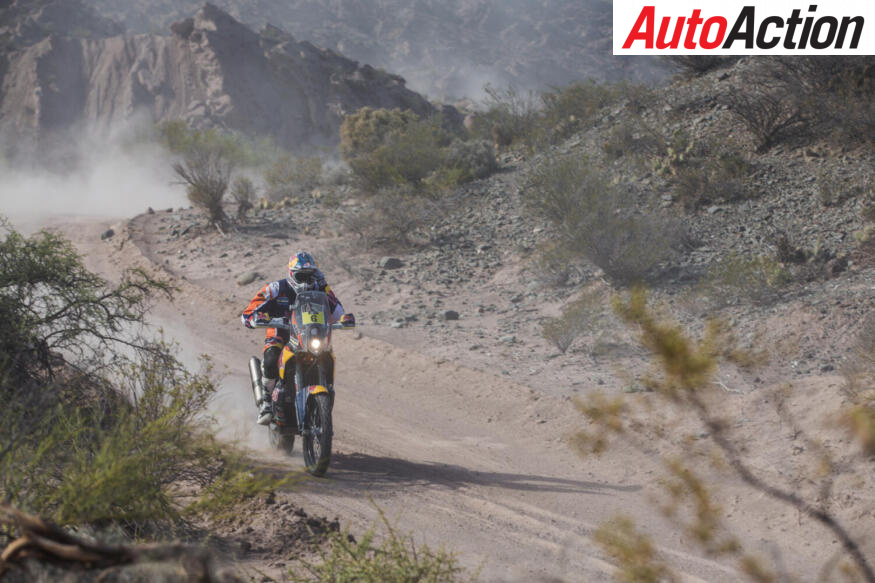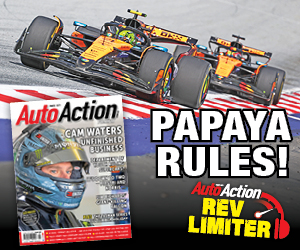Dakar Rally 2023: Event Preview

The 45th edition of one of the worlds most gruelling off road endurance races, the Dakar Rally, kicks off on December 31.
Since 2020, the Dakar Rally has been held in Saudi Arabia, with 2023 making it the fourth time that Rally Raid has taken the biggest show in off-road racing to the Arabian/Persian Gulf area – the furthermost region of Southwestern Asia.
Running until the 15th of January, the two and four wheel machines – featuring five overall categories of vehicle with sub categories – will tackle a whopping 5,000km’s of racing over 14 timed stages until they reach the chequered flag in Dammam.

The 2023 edition will be the longest distance covered by competitors since the 2014 edition, when it was held in South America.
The race consists of one stage per day comprising at least one “special” stage each (several hundred kilometres long), which may be on or off-road. The total distance covered is several thousand kilometres.

Australian legend Toby Price from Red Bull KTM Factory Racing testing in Merzougha for Rally Dakar 2023. Image: Red Bull Content Pool
The classification of the stage is made up of the times set in the special stage plus any sporting penalties. The race requires precise navigation, which is done via a road-book provided by the organisers and handed out at the start of each stage.
The starting order of each special will be based on the times set in the timed sector of the previous stage, including any sporting penalties (e.g. for speeding in link sectors or missing waypoints) incurred during the stage.
Categories:
Motorbike – Maxed out at 450cc, the motorbikes are considered one of the premier categories of Dakar, with the majority of riders being amateurs, with a strict selection process. Candidates must have completed a leg of the FIM Cross-Country World Cup, or a “Dakar Series” race. Within the several groups, such as RallyGP and Rally2, the elite group of riders sport yellow number plates, and have previously had top 10’s and or won stages of prior Dakar Rally’s.
Quads – The Quads operate over two power classes for two wheel and four wheel drive, with the 2W category having a maximum engine capacity of 750cc, and the 4W at 900cc.

The most succesful WRC driver in history, Sebastien Loeb, will take on his 7th Dakar Rally in a Quad. Image: Red Bull Content Pool.
Lightweight Vehicles – The lightweight vehicles make up the T3 and T4 Categories, based on production vehicles, also known as SSV’s. Equipped with fuel tanks no larger than 130 litres with a running range of 250km, the T3 and T4 runners are largely amateurs and operate in bigger teams.
Cars – The cars operate over T1, T2 and Open classes, with prototypes that meet the FIA safety standards. The fibreglass or carbon body work often emulates production vehicles in appearance, but are entirely purpose built and designed for competition. T1’s can be 2 or 4 wheel/ petrol or diesel, whilst the T2 class vehicles are more production based, 4X4’s that are modified for both racing whilst meeting strict safety features. The Open class features several sub-categories, and operates under different tech-standards than the FIA based ones, such as the SCORE rules that allow for electric and alternate powered vehicles.
Trucks – The truck categories operate over the T5.1, T5.2, and T5.3 classes, with the first category being production based trucks that meet FIA regulations. This has become a far less populated category due to the difficulty in dune crossing. The T5.2 class is the more common truck: prototypes that follow ASO (Dakar organisers: Amaury Sport Organisation) written regulations: lightweight and powerful, their top speed is capped at 140km/ph and run with an empty cargo hold. The latter class are “rapid support” vehicles for carrying spare parts. These once T5.1/2 trucks now serve as rolling workshops which can assist any vehicle in need.

Sam Sunderland, seen here in the 2015 South American Dakar Rally, was the 2022 winner in the Motorscyle class. Image: Red Bull Content Pool
History
The origins of the Dakar Rally started in 1977, when French motorcycle racer Thierry Sabine got lost in the Libyan desert in the isolated mountains of the Tchigai Plateau whilst competing in the Abidjan-Nice Rally. The first official Dakar Rally was held in 1978.
After navigating his way out of the unforgiving desert, the former 24 Hours of Le Mans competitor wanted to design a race that was based on his experience with a route that started out of Europe, which would continue into Algiers, crossing the Agadez in the Sahara, before ending up at Dakar (Senegal).
Dakar remained the finishing point of the rally until 2007, when it was moved to South America after security concerns arose in West Africa in the Islamic Republic of Mauritania; it was then shifted to its current location in Saudi Arabia.
For more of the latest motorsport news pick up the latest issue of AUTO ACTION.
AUTO ACTION, Australia’s independent voice of motorsport






